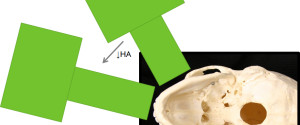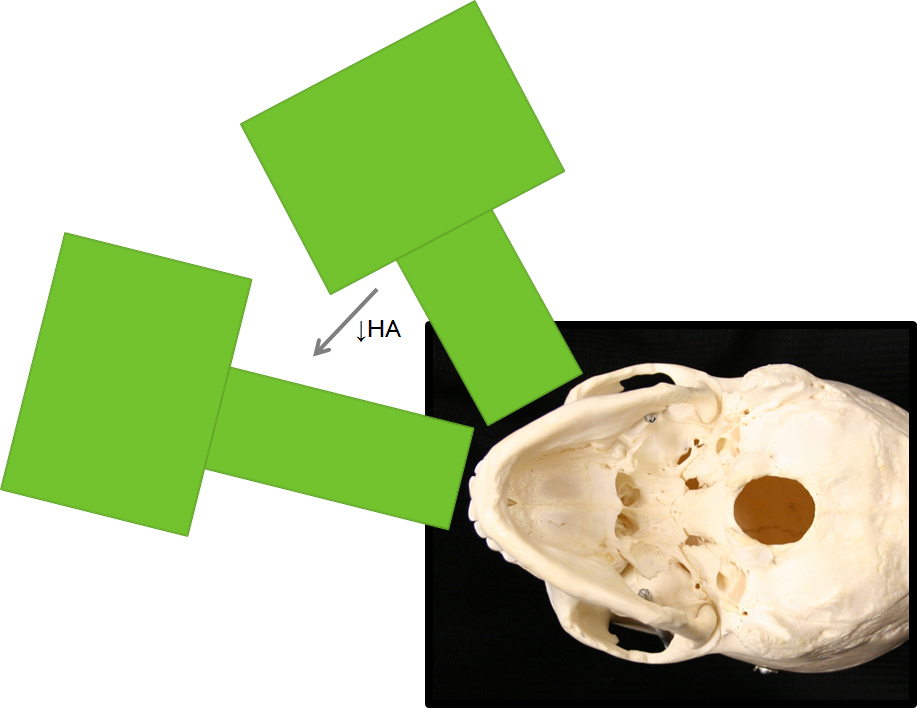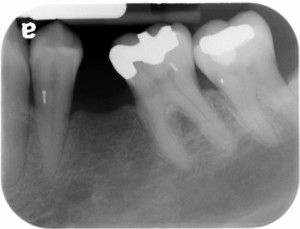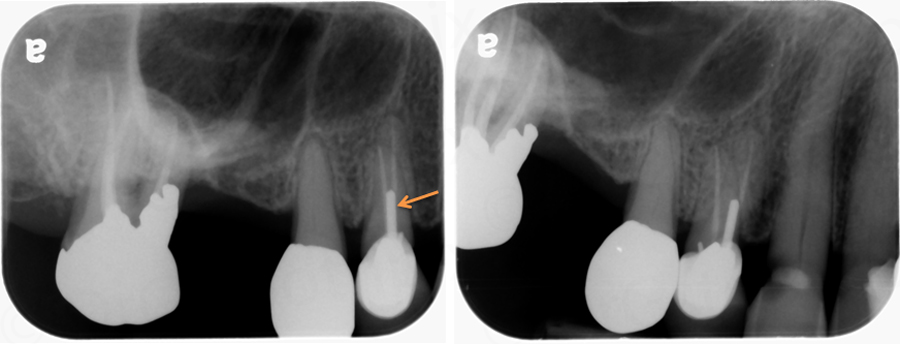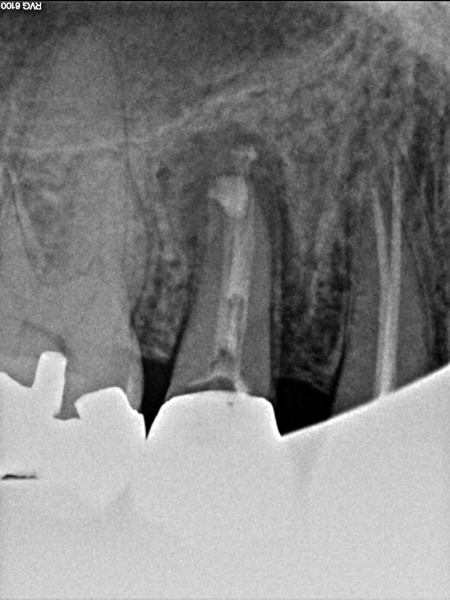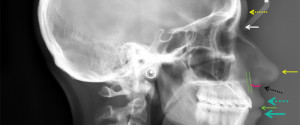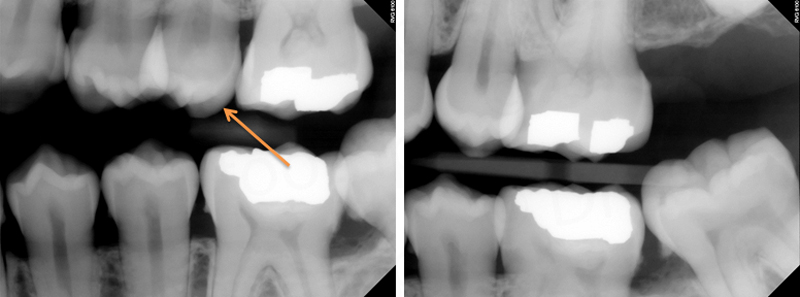Now onto the answers for the July 2013 Locate the Object. I will be going over both image shift and SLOB (Same-Lingual, Opposite-Buccal) to determine the location of the pin superimposed over the first premolar.
Image shift
Before starting to use the image shift principle it is important to know two key points
- Images move in the opposite direction from the movement of the source.
- Images of objects farther from the image receptor will move more (aka objects (images) more facial/buccal will appear to move more).
I’m going to go over this example with the premolar bitewing radiograph and anterior periapical radiograph.
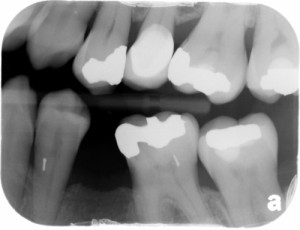
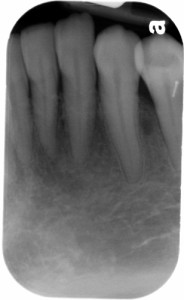 The first thing to do is pick a stationary object that is seen on both radiographs and appears to move in comparison to the pin location. I am going to use the root canal space of the first premolar. The most obvious angle change is to the horizontal angle so will we use those changes. Starting with the bitewing radiograph and moving to the anterior periapical radiograph, the source of radiation (tubehead) moves anteriorly decreasing the horizontal angle.
The first thing to do is pick a stationary object that is seen on both radiographs and appears to move in comparison to the pin location. I am going to use the root canal space of the first premolar. The most obvious angle change is to the horizontal angle so will we use those changes. Starting with the bitewing radiograph and moving to the anterior periapical radiograph, the source of radiation (tubehead) moves anteriorly decreasing the horizontal angle.
According to point 1 above, this means the images move posterior (yes, I realize that we are seeing more anterior teeth but this is due to physical placement of the image receptor).
Looking at the second radiograph (anterior periapical radiograph), we need to compare the image movement of the root canal space versus to the pin to see which object moved more posterior following point 2 listed above.
The pin appears to be more posterior on the radiograph meaning it is farther from the image receptor compared to the root canal space. This gives us an answer of the pin being to the buccal/facial of the root canal space.
SLOB (Same-Lingual, Opposite-Buccal)
For this example, I will use the two periapical radiographs.
The first thing to do is again pick an object with a known fixed location – the root canal space of the mandibular first premolar.
The second thing to do is determine which direction we are moving from the anterior periapical radiograph to the premolar periapical radiograph (i.e. is the premolar periapical radiograph to the mesial or distal of the anterior periapical radiograph) and the answer would be – distal.
Lastly, on the premolar periapical radiograph determine what direction the pin appears to have moved in relation to the root canal space – mesial. Here is where the acronym comes into play. Did the unknown object move in the SAME direction as the radiographs or in the OPPOSITE direction? Our answer is – opposite and the acronym states that opposite is buccal, so the pin is to the buccal of the root canal space.
I realize that this is challenging to initially grasp but with more practice it will start to become second nature. Another case will be coming the second week of August. If you have any questions or comments, please leave them below. Thanks and enjoy!
